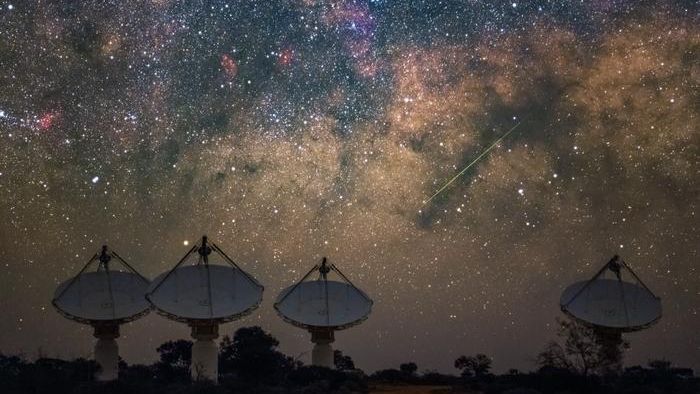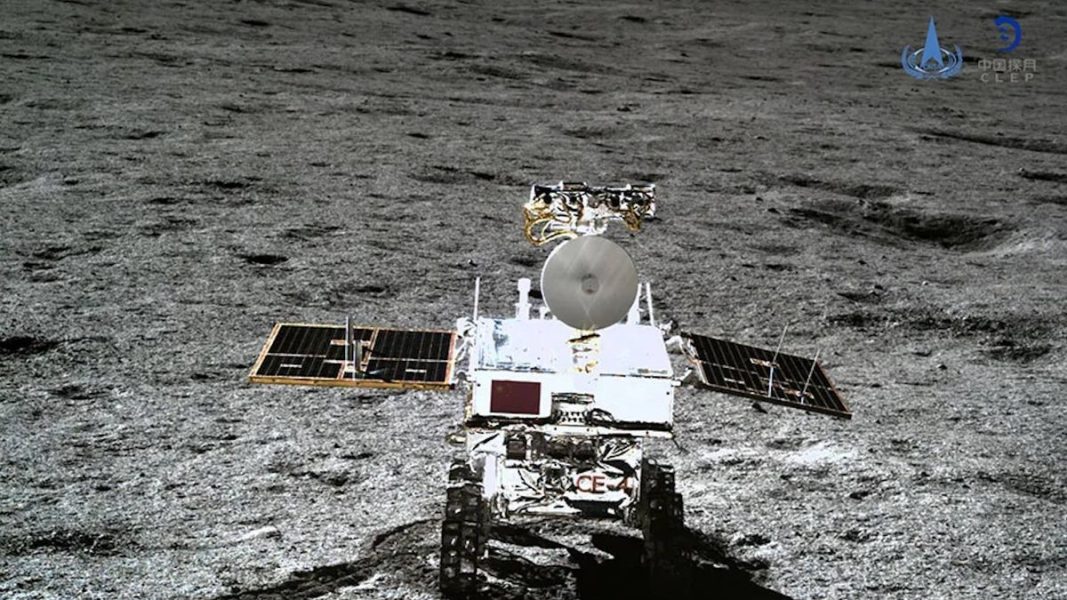New fast radio burst detector could sift through ‘a whole beach of sand’ to solve big cosmic mystery – Space.com

No offers foundThe system, called CRACO, can search through 100 billion pixels of night sky a second
When you purchase through links on our site, we may earn an affiliate commission. Here’s how it works.
Researchers have successfully tested a new technology that detects fast radio bursts in the night sky faster than ever before, uncovering a treasure trove of data to help astronomers investigate the source of these mysterious space phenomena.Developed by astronomers and engineers at Australia’s national science agency, the Commonwealth Scientific and Industrial Research Organization (CSIRO), the new system — known as the Commensal Realtime ASKAP Fast Transient Coherent, or CRACO — was designed to rapidly detect fast radio bursts (FRBs) and other transient phenomena using CSIRO’s ASKAP radio telescope in Western Australia.FRBs are sporadic, intense flashes of radio wave energy that can be brighter than entire galaxies. In just thousandths of a second, an FRB can emit as much energy as the sun does over three days, typically at a radio frequency of about 1,400 hertz. Given their unpredictable nature as well as how fast they can come and go, gathering data on FRBs can be difficult, making them one of astronomy’s more exciting mysteries.This data gap is what a team, led by Andy Wang from Curtin University’s node of the International Center for Radio Astronomy Research (ICRAR), set out to solve. Remarkably, in the system’s first test, Wang found more objects than he’d anticipated, including two FRBs, a couple of sporadically emitting standard neutron stars, and better data for four known pulsars. The latter helped refine the locations of these pulsars, which are spinning neutron stars. Since that first test, additional searches have found more than 20 FRBs.”We were focused on finding fast radio bursts, a mysterious phenomenon that has opened up a new field of research in astronomy,” Dr. Wang said in an ICRAR statement. “CRACO is enabling us to find these bursts better than ever before. We have been searching for bursts 100 times per second and in the future we expect this will increase to 1,000 times per second.”Keith Bannister, a CSIRO astronomer and engineer who led the team that built CRACO, likened its capabilities to “sifting through a whole beach of sand to look for a single five-cent coin every minute.” The system processes about 100 billion pixels per second, scanning ASKAP’s “live” view of the sky in search of fleeting cosmic signals.Located at Inyarrimanha Ilgari Bundara, the CSIRO Murchison Radio-astronomy Observatory on Wajarri Yamaji Country, the ASKAP radio telescope is already a major radio astronomy facility for international scientists, so CRACO’s integration into ASKAP is expected to broaden the observatory’s scientific impact worldwide.Breaking space news, the latest updates on rocket launches, skywatching events and more! — Astronomers have pinpointed the origin of mysterious repeating radio bursts from space — Where do fast radio bursts come from? Astronomers tie mysterious eruptions to massive galaxies — Mysterious fast radio bursts could be caused by asteroids slamming into dead stars”Once at full capacity, CRACO will be a game changer for international astronomy,” Wang said. “We’re also detecting long-period transients, which remain mysterious objects within our galaxy. Both fast radio bursts and these transients were first discovered in Australia, so it is great that we’re continuing the path of discovery with this impressive technology.”As part of CSIRO’s Australia Telescope National Facility, CRACO will soon be available to astronomers around the globe, enabling rapid identification of transient celestial signals and paving the way for further discoveries in the cosmos.The first batch of findings was published this week in Publications of the Astronomical Society of Australia.Join our Space Forums to keep talking space on the latest missions, night sky and more! And if you have a news tip, correction or comment, let us know at: community@space.com. John is a science and technology journalist and Space.com contributor. He received his B.A. in English and his M.A. in Computer Science from the City University of New York, Brooklyn College, and has bylines with TechRadar, Live Science, and other publications. You can find him on Twitter at @thisdotjohn or seeking out dark sky country for spectacular views of the cosmos. Save $300 on the VIVE XR Elite, one of the best VR headsets on the marketGerman company Atmos launching 1st cargo-return capsule on upcoming SpaceX missionPutin axes Yuri Borisov, head of Russia’s space agency
Space is part of Future US Inc, an international media group and leading digital publisher. Visit our corporate site.
©
Future US, Inc. Full 7th Floor, 130 West 42nd Street,
New York,
NY 10036.






